|
Price:
USD1150 ( Exclude shipping cost)
The free mini remote
controller not in warranty


Purchase the metal remote controller
simultaneous price is USD40.
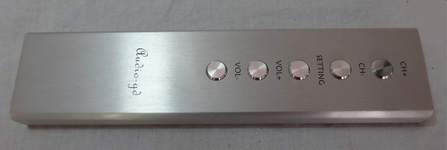
Please send your address, name
to audio-gd@vip.163.com
get the quote.
Click to download the
driver of
Amanero
combo 384
What's new in R-28 NOS:
Some people love the sound of the pure NOS
mode , so we design the R-28 NOS that optimize the pure NOS mode ,
offer the pure musical sound .
The NOS design don't need the main clock
signal for working, that is the advantage of the NOS design to avoid
the effect by the main clock's jitter .
In the R-28 NOS digital processor , we
apply the zero delay technology that guarantee the data and
clock exact synchronization for much reduce the jitter .
In the R-28 NOS design , we apply the
galavanic isolator before the DA parts and analog parts
, isolate the all digital inputs and the digital processor , that
offer the better clean sound quality .
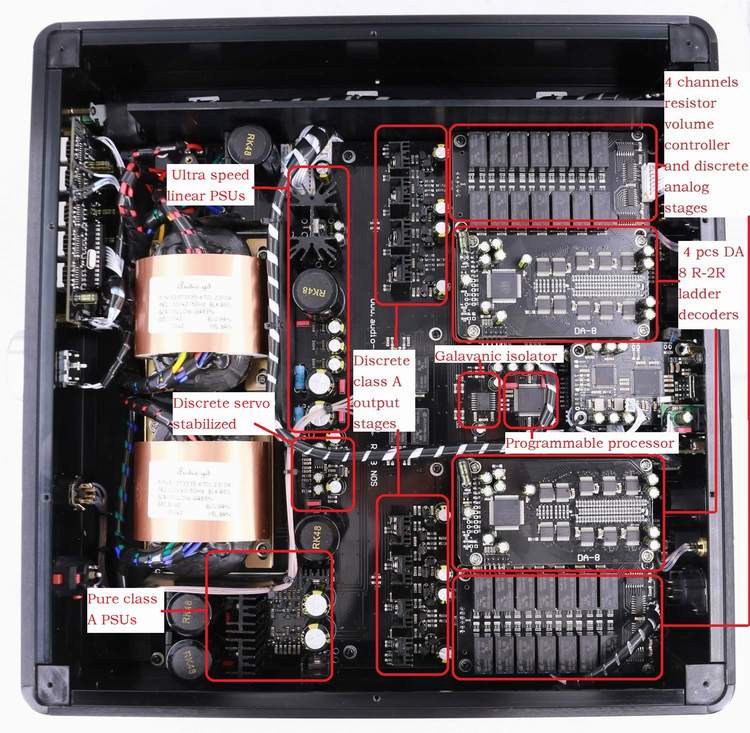
Choice between R-28 2022 and R-28NOS:
The R-28 2022 has built in Oversampling
mode and NOS mode, that can flexile choice the different to choice
different sound flavor for user.
The R-28 NOS only built in the optimize NOS
mode , that more suite who like the NOS sound warm and smooth but
still transparency and tubelike sound .
Some things you may need to know
about the NOS design before purchasing:?
1¡AMany facts not commonly known
about the NOS design :
In the 1970'S, the first generation
of CDP were released , and they used an NOS design .
"NOS" stands for "Non Oversampling". Using a NOS design, specs are
ordinary because the limited signal bit depth affects THD and S/N.
Despite the fact that quantization
noise affects S/N, the R-28 NOS still achieves very low noise
levels, much better than most tube amplifiers and turntables, and
much like a modern OS DAC .
To get better specs on paper, many
designs apply a quite complex LC analog filter after the D/A
conversion. But the LC filter usually does not have a flat response
and the large phase shift it causes also affects sound quality
considerably.
In 1980's, oversampling and FIR
filter were invented, and allowed improving sound quality compared
to applying an LC filter. Good specs were obtained on paper, so this
technology has been largely applied ever since.
But some people still liked the sound
of the NOS design better and felt that without the extra processing,
it did a better job at preserving the original character of the
sound, like in real world, trusting their ears rather than specs.
Therefore if you want good specs, the
NOS design definitely is not for you.
2¡ADiscrete servo stabilized power supply:
Using the latest
designed discrete servo stabilized power supply to feed the digital
circuits, the noise level is comparable to that of a battery, but
without the dry and thin sound characteristics of it, and thus the
product's operating temperature is significantly lower than that of
the previous model. The analog circuit are still powered by a pure
class-A regulated power supply for the best sound results.
3¡ATube-like sound:
The basic NOS
design has a tube-like sound or a vinyl feeling . It may have to do
with distortion being similar to these, typically between 0.01% and
0.1%. Some expensive USA-made DAC has even inferior specs but a lot
people consider it has a beautiful sound .
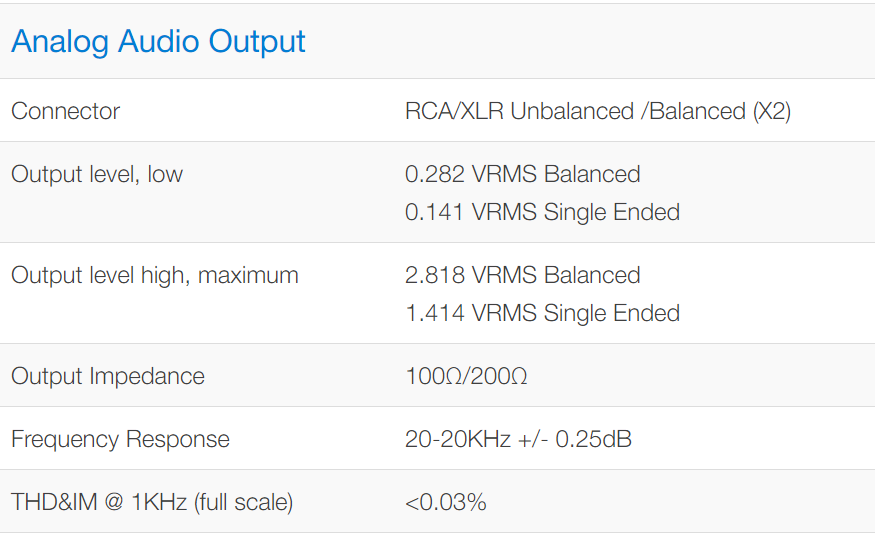
The R-28 NOS distortion is
similar to a vacuum amplifier or turntable and to the expensive USA-
made DAC referred upon.
But the noise level is better than 120DB that much higher than the
vacuum amplifier and turntable.
R2R-28 NOS feature:
1. 8 group built-in 24bit R-2R decoders and 4
native DSD decoders work with balanced mode.
2. All inputs and digital processor with galavanic isolators.
3. Two high-quality R-core transformers power supply.
4. 9-group of power supplies overall for the different components.
The R-2R modules apply 2 groups of servo-controlled discrete PSUs .
The analog output stages are powered by the 2
groups of pure class-A PSUs. . The control module and volume boards use a separate
PSU to avoid any contamination to the digital and analog signal
components.
5. The unit has two gain modes, the 12DB on low gain for drive
the headphone which has over 95DB sensitivity, and 22DB on high
gain cooperate with the strong power ability, enough to drive the HE6 which has around 85DB
sensitivity headphones. If customer want to boost 6-12DB gain, in
total 28-34DB gain.
6, Relay volume control boards built-in for accurate channel balance
and transparent sound . 0.1% resistors are used in parallel to
increase the effective tolerance to 0.05%.
Pros and cons of R-2R DAC :
Advantages:
1.R-2R will not convert the clock signal into the output
signal.
2. R-2R is not sensitive to jitter .Delta-Sigma D/A is much
more sensitive to jitter.
3. The output signal is much more precise compared to
Delta-Sigma D/A .
Weaknesses:
1.THD today is extremely good with Sigma Delta chips in
comparison to R2R ladders are good too but not as good.
2. Glitches and accuracy of the ladder resistors are very
difficult to avoid and require complex technology to resolve it.
R-2R basic design in the market:
The
R-2R DAC is very popular nowadays and available from DIY kits up to
completely high-end products.
In the low range DIY market, the R-2R design is often
based on old technology designed a long time ago by MSB and only
includes basic R2R ladder design and do not include the wonderful
correction design of the original MSB technology. This design uses
data shift registers logic chips in series mode to convert the data
to an analog signal. The structural R2R technology issues cannot be
avoided, and performance is solely depending on the accuracy of the
ladder resistors.
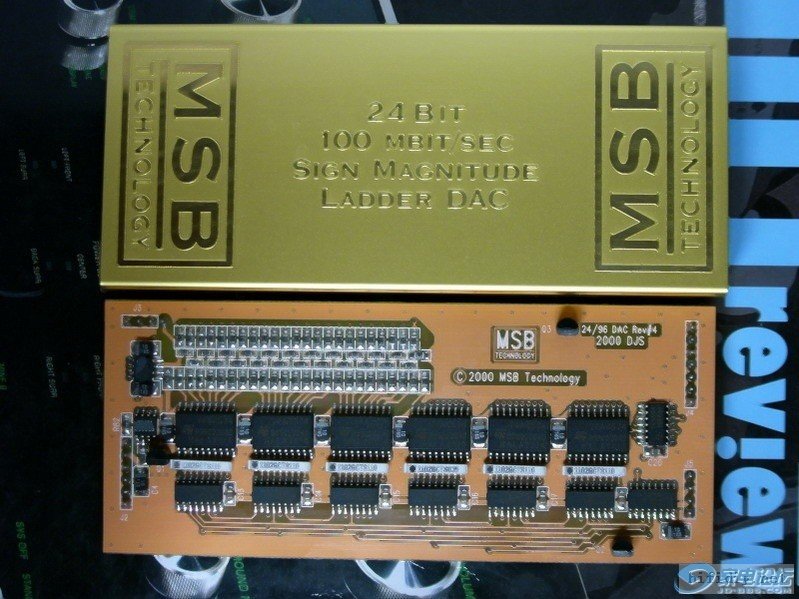
In the High-End market the R2R design is much more complex and
achieves better performance. A basic R2R ladder is simply not
sufficient enough to achieve good performance and high sound
quality! Some manufacturers are using shift registers design. A less
complex and less efficient design based on traditional logic chips
working in serial mode to correct the ladder.
A far better design switches resistors in parallel mode. An
ultra-fast FPGA controls and corrects the R2R ladder. The parallel
design mode controls every bit respectively and therefore achieve
unprecedented performance. (In parallel mode only 1 clock cycle is
needed to output all data; serial design mode needs at minimum 8 up
to 24 clock cycles) The parallel design is much more complicated.
Once designed properly it can correct every bit of the ladder.
Photo below shows a design with such FPGA, can correct the
unavoidable imperfections of the R2R ladder caused by intolerance of
resistors glitches and achieve best performance.
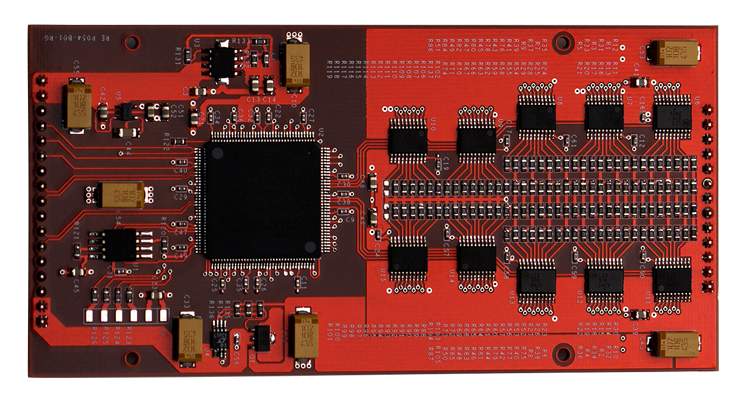
Accuracy of the ladder resistors (tolerance):
Many
people believe the tolerance of the resistors in the ladder is most
important to reach best performance. Nowadays 24 bit resolution is
standard. What tolerance is needed to achieve 24 bit resolution?
When we look at 16 bit the tolerance of 1/66536, 0.1%
(1/1000) is far not enough, even a tolerance of 0.01% (1/10000), the
best tolerance available in the world today, still cannot handle 16
bit correctly; we are not even calculating 24 bit here!
The tolerance of the resistor will never solve
Imperfections of a ladder. This would require resistors with a
tolerance of 0.00001% and ability to handle 24 bit resolution. This
is only in theory because the discreteness of the switch logic chips
have already too much internal impedance and will destroy the
impossible tolerance of a the resistor.
The solution is to correct the ladder and not to depend
on the tolerance of resistors. It¡¦s a combination of both: Ultra-low
tolerance resistors controlled by a correction technology and very
high speed FPGA which is applied in in our design.
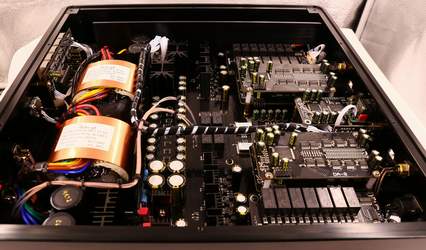
Importunacy of the FPGA/CPLD:
FPGA/CPLD
stands for Programmable Array Logic.
Nowadays the FPGA/CPLD is applied in a lot high end grade
DACs; like the popular ROCKNA WAVEDREAM DAC.
We have
applied the FPGA/CPLD in our DAC products since 2008.
R-28 NOS has
built in 6 pc CPLD programmable chipsets to separate the different
configured circuits for avoid interrupt .
The internal hardware design is fully controlled by
complex software. A huge advantage is the fact the software in the
FPGA/CPLD can easily be upgraded offering new features or improve the
performance. Such design is much flexible and future proof! |

